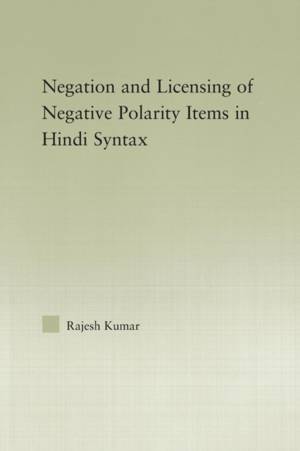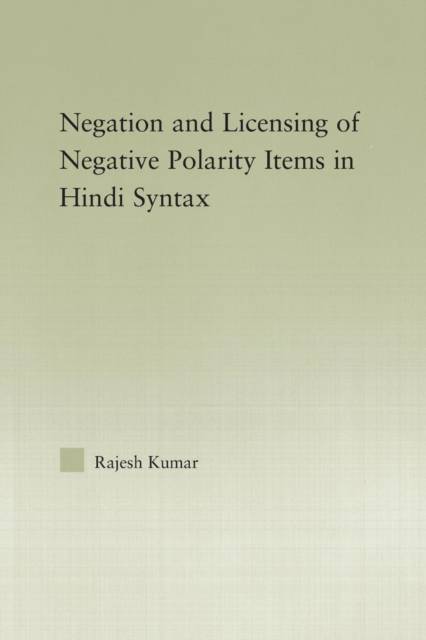
- Afhalen na 1 uur in een winkel met voorraad
- Gratis thuislevering in België vanaf € 30
- Ruim aanbod met 7 miljoen producten
- Afhalen na 1 uur in een winkel met voorraad
- Gratis thuislevering in België vanaf € 30
- Ruim aanbod met 7 miljoen producten
Zoeken
The Syntax of Negation and the Licensing of Negative Polarity Items in Hindi
Rajesh Kumar
€ 28,95
+ 57 punten
Uitvoering
Omschrijving
This books studies syntax of NPIs and their interaction with sentential negatives in Hindi. It outlines the clause structure of Hindi and locates the syntactic position of sentential negatives as well as constituent negatives within the structure. It is argued that sentential negative in Hindi negation marker heads its own maximal projection, NegP, which is immediately dominated by TP. In addition to locating the position of negation markers in the clause structure, it outlines the distribution of negative polarity items (NPIs) in Hindi and the structural constraints on their licensing by sentential negative. The book argues that an NPI in Hindi is licensed overtly in the course of derivation by a c-commanding negative marker. The bulk of the evidence presented in this book argues against previous theoretical accounts that claim that NPI licensing involves covert syntactic operations such as LF movement or reconstruction. With respect to the classification of NPIs, this book also shows the existence of two different types of NPIs in Hindi; namely, strong NPIs and weak NPIs. Strong NPIs require a clause mate c-commanding negative licensor, whereas weak NPIs are quantifiers and are similar to free choice 'any' in English that are interpreted as NPIs in the presence of a c-commanding negative licensor.
Specificaties
Betrokkenen
- Auteur(s):
- Uitgeverij:
Inhoud
- Aantal bladzijden:
- 200
- Taal:
- Engels
- Reeks:
Eigenschappen
- Productcode (EAN):
- 9781138011748
- Verschijningsdatum:
- 12/08/2014
- Uitvoering:
- Paperback
- Formaat:
- Trade paperback (VS)
- Afmetingen:
- 155 mm x 229 mm
- Gewicht:
- 430 g

Alleen bij Standaard Boekhandel
+ 57 punten op je klantenkaart van Standaard Boekhandel
Beoordelingen
We publiceren alleen reviews die voldoen aan de voorwaarden voor reviews. Bekijk onze voorwaarden voor reviews.











